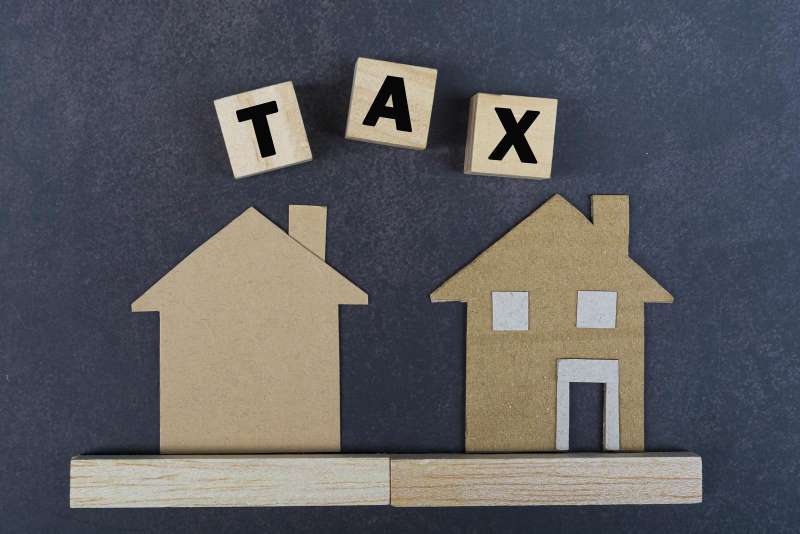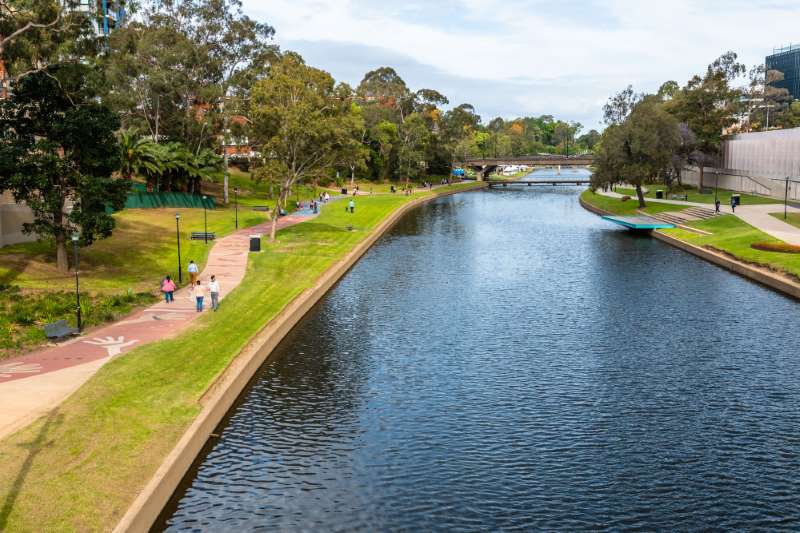In Hinkler Ave 1 Pty Limited v Sutherland Shire Council [2023] NSWCA 264 (Hinkler), the Court of Appeal confirmed the long-standing principle that development applications are not “made” until the lodgement fees for the applications have been paid. This case addressed the applicability of a savings provision under the State Environmental Planning Policy (Housing) 2021, emphasising the distinction between submitting and completing a DA under the Environmental Planning and Assessment regulation. For this reason, it is crucial that applicants are aware of their responsibilities in regard to development applications. [...]
The Introduction of Transport Oriented Development to the State Environmental Planning Policy (Housing) 2021
In December 2023 the NSW Government announced the introduction of the Transport Oriented Development (TOD) program to increase housing supply and density near the existing and planned transport hubs. Later in April of 2024, the TOD initiative culminated to the making of theState Environmental Planning Policy (Housing) Amendment (Transport Oriented Development) 2024 (TOD SEPP), with the NSW Minister for Planning and Public Spaces announcing its arrival. This then commenced on 13 May 2024 by way of creation of a Chapter 5 in the State Environmental Planning Policy (Housing) 2021 (Housing SEPP). [...]
Proposed Reforms for Low and Medium Density Housing
In December 2023, the NSW Department of Planning and Environment released its “Explanation of Intended Effect” (EoE) for proposed low and mid-rise housing reforms, aiming to address the housing crisis by enabling increased residential development in urban areas near transports and town centres. The reforms will propose significant changes to house permissibility, development controls and landscape regulations with public exhibition concluding in February 2024.
The housing crisis is a major concern for many individuals with an extensive shortfall of dwellings. The EoE is attempting to address this by by supplying new housing in existing urban areas (known as “infill development”), to facilitate low and mid-rise housing “near established town centres, and in areas where there is good public transport”. The proposed reforms look to expand the permissibility and development controls for certain forms of residential developments. Notably, the proposed reform would expand the permissibility of residential developments by: [...]
Limits to the power to amend undetermined development applications during Class 1 appeal proceedings before the Land and Environment Court (LEC)
Summary: The LEC has recently found that the proposed amendments to a development application on appeal were outside the power to amend, and in accordance with s 4.19 of the Environmental Planning and Assessment Act (EPA Act), and the substantive use as sought in the original development application submitted to Council is limited to the use as sought in the Class 1 Application.
Facts: In the matter of Reid v Woollahra Municipal Council [2023] NSWLEC 1611, the applicants sought leave to amend their development application (DA) to rely on amended plans and documents. The respondent, Woollahra Municipal Council (Council) opposed the application for leave to amend. The substantive proceedings were brought pursuant to ss 8.7 and 8.11 of the EPA Act against Council’s deemed refusal of a DA, which originally sought consent for demolition of an existing attached dual occupancy and construction of a new attached dual occupancy. The amended plans and documents sought a change to the erection and use of the development from an attached dual occupancy to a single dwelling. [...]
An Overhaul of the Taxation Scheme: Developments for Developers
In July 2023, the NSW parliament passed the Environmental Planning and Assessment Amendment (Housing and Productivity Contributions) Act 2023 (NSW), which introduces Housing and Productivity Contribution (HPC). HPC replaces the previous Special Infrastructure Contribution (SIC) scheme and applies a more consistent contribution framework over a much wider area, including the entire Local Government Areas located in:
- the Greater Sydney region;
- the Illawarra-Shoalhaven region;
- the Lower Hunter region; and
- the Central Coast region.
The HPC will apply from 1 October 2023, except in relation to land within the Western Sydney Growth Areas and Western Sydney Aerotropolis SIC areas (to transition to the HPC regime by 2026). [...]
How do I object to a Development Application?
Who can make an objection to a DA and what is in an objection?
When a development application (DA) is lodged on the NSW Planning Panel, nearby property owners and any concurrent authorities are notified, so that they are aware of the DA and have opportunities to make submissions. Council’s own policy, council’s development control plan, and the local environmental plan provide guidance as to who is notified of such a DA. The property owners within the vicinity of the proposed DA, and/or anyone who has a submission to make, may provide one of the following responses: [...]
State-wide Standard Conditions of Consent and Notices of Determination Now in Use
On 30 June 2023, the Department of Planning’s requirement for planning authorities to adopt standardised conditions of consent and notices of determination came into effect. This requirement affects all councils and planning authorities when they are granting development consents via the Planning Portal.
The Department has published a manual containing about 40 conditions of consent and made standard notices of determination templates for 11 types of determination, including standard approval subject to conditions of consent, deferred commencement consent, and refusal of consent. [...]
New employment zones are now in effect!
On 26 April 2023, five new employment zones and four supporting zones were introduced into 135 local environment plans (LEPs) across NSW.
The new zones were formally introduced via an amendment to the Standard Instrument (Local Environmental Plans) Order 2006 (SI LEP Order) on 1 December 2021 to repeal the Business () or Industrial (IN) zones. These changes were made in response to the NSW Productivity Commission’s White Paper on Rebooting the Economy, which recommended consolidating employment zones. [...]
Overview of the Greater Cities Commission
Established in 2016, the Greater Sydney Commission was initially formed under the (now repealed) Greater Sydney Commission Act 2015 (NSW), its purpose was to act as a central state government agency to assist local and state governments in the collective planning and development of the Greater Sydney Region.
Recent amendments under the Greater Cities Commission Act 2022
With the continuous growth of the population and demand for accessibility, the Greater Cities Commission Act 2022 (NSW) (Act) was introduced to expand the Greater Sydney Region to include three new cities. As such, there are now six cities managed by the new Greater Cities Commission (Commission) as follow:- [1] [...]
Interim Heritage Orders
Helm No 18 Pty Ltd v North Sydney Council [2022] NSWLEC 1406
Overview & Facts
The case of Helm No 18 Pty Ltd v North Sydney Council [2022] NSWLEC 1406 provides relevant considerations a Council may need to consider before issuing an interim heritage order (“IHO”).
The case was in relation to an IHO issued by the Minster in accordance with the Heritage Act 1977 (NSW) (“The Act”). The IHO was issued to the owners of 131 and 133 Holt Avenue, Cremorne (“the Properties”). According to section 26 of the Act, Council does not have to provide notice in its intention to place an IHO. A Council, however, must provide notice once the IHO has been taken into effect; in this instance, being when the Properties and their heritage status was published in the Government Gazette in compliance with section 28(1)(c) of the Act. [...]
Who is Responsible for Infrastructure in Flood Prone Land Downstream of Warragamba Dam?
Summary
The floods earlier this year have resulted in many questioning who is responsible for infrastructure being built on flood prone land, and how it can be stopped, given the resulting devastation to homes and business. The Environmental Planning and Assessment Act establishes the framework for provision of Environmental Planning Instruments (‘EPIs’) which set out how land can be used for development purposes by dividing land into different land use types, called ‘zones’ . The EPI determines what type of developments can occur on different ‘zones’ within each of Councils Local Government Area’s. This includes provision for what can and cannot be built on flood prone land. There are two different types of EPIs being Local Environmental Plans (‘LEPs’) and State Environment Planning Policies (‘SEPPs’). These, in conjunction with developers building on flood prone land and the unique constraints associated with Warragamba Dam, have contributed flooding in areas within the Hawkesbury Nepean catchments. [...]
Malass v Strathfield Municipal Council [2022] NSWLEC 1160
Summary
The Land and Environment Court of New South Wales has delivered a recent judgment considering the interpretation of the definition of ‘gross floor area’ (GFA) as set out in the Standard Instrument – Principal Local Environmental Plan.
GFA calculations are one of the more complex aspects of the NSW planning system, however, with the growing body of case law, it is becoming increasingly clear as to what will be included or excluded from this calculation. The recent decision of Dixon SC in Malass v Strathfield Municipal Council [2022] NSWLEC 1160 (Malass) has contributed to this body of case law, with the judgment clarifying the scope of item (g) in the definition of what is excluded from GFA calculation, being the space allocated to car parking and access to same. [...]






